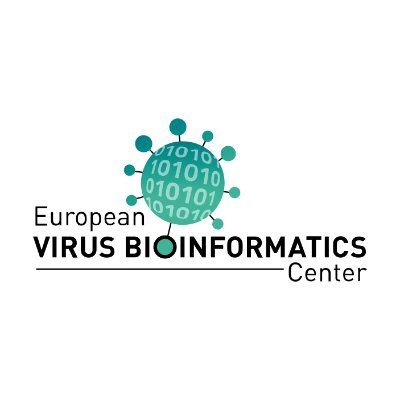
Simon Dellicour
@sdellicour
Followers
1K
Following
3K
Media
22
Statuses
446
@frsFNRS Research Associate at the @ULBruxelles and Visiting Professor at the @KU_Leuven. From 2024 you can find me here https://t.co/qEoAeSEDHG
Joined April 2014
I am delighted to announce that from the 1st October 2020 I start a permanent academic position as an @frsFNRS Research Associate affiliated to the Spatial Epidemiology Lab ( https://t.co/aPq21LOANz) founded by @mariusgilbert at the @ULBruxelles @ULBRecherche
23
6
103
How fast do #viruses spread in the wild? @sdellicour @LemeyLab &co compare dispersal metrics from #phylogeographic analysis of viral #epidemic genomes with dispersal capacity of diverse viruses, revealing host movement-related discrepancies #PLOSBiology
https://t.co/pH3MnR7NKo
2
19
75
The PhD student will also perform several long research stays in the research team of @ClaireGuinat at the Epidemiology lab (Epidesa, https://t.co/p2tKHaTVVF) located on the INRAE-ENVT campus, Toulouse, France. Dead-line to apply: January 15, 2025 (5/5)
0
0
2
impacting their dispersal. More information on the PhD project can be found here: https://t.co/AM6n2SIOzq. The PhD project will be based at the University of Brussels (ULB, Belgium, https://t.co/4iBxH7GXk3), in the Spatial Epidemiology Lab (SpELL, https://t.co/2fnGzVJyIq) (4/4)
1
0
3
The overall objective of the PhD project will be to inform vaccination strategies by analysing the epidemiological and dispersal dynamics of circulating AIV lineages in countries associated with different vaccination settings and unravelling the environmental factors (3/5)
1
0
2
VIVACE is funded by the Marie Sklodowska-Curie action of the Horizon Europe programme (more information on VIVACE can be found here: https://t.co/s0fZCSWyXt). To apply, please follow the procedure described here: https://t.co/WZ0k34gomK, or here: https://t.co/AM6n2SIOzq (2/5)
inrae.fr
Vaccination of poultry in Europe against avian influenza viruses requires studying the importance, opportunities and challenges associated with its implementation. This is the aim of the VIVACE...
1
0
2
[Job offer, a 4-year PhD student position at the @ULBruxelles] Please share, with @ClaireGuinat we are looking for a highly motivated PhD student to work under our co-supervision within the VIVACE Doctoral Network @ULBRecherche @INRAE_France @INRAE_Tlse @TimVergne (1/5)
2
19
19
A collaborative study conducted at the Spatial Epidemiology Lab (SpELL, https://t.co/2fnGzVJyIq) of the @ULBruxelles with the support of the European @MOOD_H2020 project and @frsFNRS, and the contribution of @dianacerazoq, @MaferVincenti, Wim Van Bortel, and @Elena_Arsevska (8/8)
0
1
3
underscore the potential for a more proactive and comprehensive strategy in managing the threat of WNV in Europe by combining indicator- and event-based and environmental data for effective surveillance and public health response (7/8)
1
0
1
at risk of WNV infection in humans, particularly in Spain, Italy, France, and Greece. Although event-based surveillance data do not constitute confirmed occurrence records, integrating both indicator-based and event-based surveillance data proved useful. These results (6/8)
1
0
1
In addition to these data sources, we also used environmental data to train ecological niche models to map the risk of local WNV circulation leading to human infections. The ecological niche models based on both types of surveillance data highlighted new areas potentially (5/8)
1
0
1
reported to the European Centre for Disease Prevention and Control (ECDC), and for event-based data, we retrieved information from news articles collected through an automated biosurveillance platform: (4/8)
1
0
1
In this study, we aimed to perform risk mapping of WNV circulation leading to human infections in Europe by integrating two types of surveillance systems: indicator-based and event-based surveillance. For indicator-based surveillance, we used data on human case numbers (3/8)
1
0
1
Circulation of West Nile virus (WNV) is an increasing public health threat in Europe and, while detection of WNV is notifiable in humans and animals in the European Union, surveillance based on human case numbers presents some limitations, including reporting delays (2/8)
1
0
1
Check out the latest study from our team titled "Integrating indicator-based and event-based surveillance data for risk mapping of West Nile virus, Europe, 2006 to 2021". Led by @KylaSerres, it is now published in @Eurosurveillanc : https://t.co/r8pSpOLpft
@ULBRecherche (1/8)
eurosurveillance.org
Background West Nile virus (WNV) has an enzootic cycle between birds and mosquitoes, humans being incidental dead-end hosts. Circulation of WNV is an increasing public health threat in Europe. While...
2
9
35
The Oropouche virus expansion in Brazil was a concerning case of arbovirus emergence outside of its endemic range, and so many questions remained! We aimed to answer some of them by integrating landscape phylogeography and ecological niche modelling! https://t.co/fQef5aeQdd
medrxiv.org
In March 2024, the Pan American Health Organization (PAHO) issued an alert in response to a rapid increase in Oropouche fever cases across South America. Brazil has been particularly affected,...
2
29
55
today at 2:30pm EAT I give a Webinar on my pathogen genomics journey @KEMRI_Kenya , @KEMRI_Wellcome ; and the Ben Barres's Spotlight award received in 2022 @eLifeCommunity @sdellicour please use https://t.co/IcKw2VMjX7 to join
1
14
36
L'appel 2025-2026 pour nos bourses d'études et doctorales à Cambridge et Oxford est ouvert, avec une nouveauté : la date limite pour postuler aux bourses d'ètudes est désormais en février (elle reste en décembre pour les bourses doctorales). Plus d'infos: https://t.co/2cHAXdNeQG
0
4
8
https://t.co/26s9jufSNN is an open-source browser app for #visualizing and animating #phylogeographic data, aiding in the interpretation of #pathogen dispersal patterns. #DataVisualization 📰 https://t.co/ksY5yPZAU4 EVBC👤: @suchard_group @LemeyLab @sdellicour
0
8
29
[JOB 🔴] I am looking for a new PhD student in antibiotic resistance epidemiology to join me at the One Health Institute of the University of Zürich. https://t.co/YiXWtPM9jy
13
249
573









